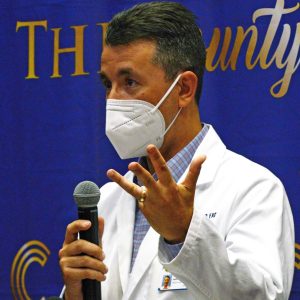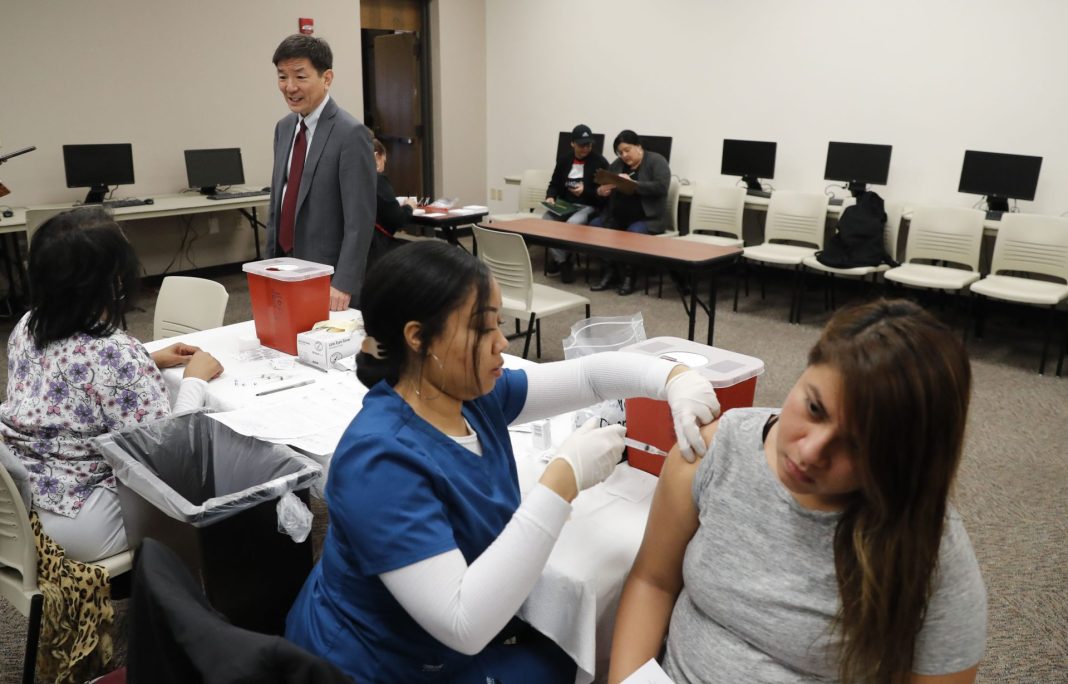|
Only have a minute? Listen instead
Getting your Trinity Audio player ready...
|

It’s that time of year for Rio Grande Valley health authorities to once again take their shot at encouraging residents to get the flu vaccine, and in doing so are debunking misconceptions that have only grown since the pandemic.
According to Dr. Ivan Melendez, health authority for Hidalgo County, during the COVID-19 pandemic there was a dramatic drop in flu cases that he attributed to the precautions taken during that time, such as wearing masks.
However, in 2023 they saw a notable increase with the flu season beginning earlier and lasting longer than previous years. Currently though, Melendez said there has not been a dramatic increase compared to last year.
But misconceptions about vaccines remain a concern.
“The problem we’re having right now, due to social media and other sources, people are really downplaying the importance of a vaccine,” Melendez said.
He added that on average the flu kills around 200,000 to 600,000 people every year which only emphasizes the severity of the virus.
“It’s a significant medical problem that people do not understand,” Melendez said.
It is for that reason that Melendez urges residents to get the vaccine in order to help prevent the flu from spreading.
According to Melendez, there are three types of vaccines: intramuscular vaccine, subdermal vaccine or a nasal spray vaccine. He recommends that residents speak to their physicians to determine which vaccine is best for them.
He explained that the vaccine currently available is a trivalent vaccine that is focused on protecting against the current most common flu variants.
Dr. James Castillo, health authority for Cameron County, added that health officials are able to determine the variant circulating each year based on the flu season in the Southern Hemisphere.

“It’s reformulated every year based on what’s expected to be the circulating version of the flu that year,” Castillo said.
He explained that although the vaccine is reformulated each year the vaccine contains “multiple versions of the protections,” to help protect one from the various variants of the flu.
In fact, Castillo said that a majority of flu vaccines still protect against the 2009 flu variant, H1N1.
“The whole point of the flu vaccine is it reduces your risk of getting severe disease and actually getting the flu but it doesn’t make it zero,” Castillo said.
Castillo encourages high risk category patients including pregnant women and people over the age of 65 to get the flu vaccine as flu season approaches.
Melendez echoed the same sentiment regarding those who should be receiving these vaccines.
“Anyone who is 6 months or older really should be getting the flu shot every year, especially those people that have some immune system issues that require extra help,” Melendez said.
He acknowledged that the vaccine may not work for everyone with about 8% of people not making the necessary antibodies after the vaccine. But he asserted that the vaccine still works on about 92% of people.
Both recommend all residents attempt to get the vaccine between the months of September and October to give the vaccine time to build the necessary antibodies.
Castillo explained that it often takes about two weeks for one’s immune system to build the antibodies to protect against the flu.
“The transmission protection lasts about three months or so but the protection against severe disease continues on for a while,” he said, adding that it is important to get the vaccine a month or two before flu season begins so it’s most effective during that time.

Oftentimes the flu will cause symptoms such as more prominent muscle aches as well as fevers that can differentiate it from COVID-19, Castillo said.
Due to both viruses being respiratory viruses they will cause similar responses in the body, but COVID-19 tends to cause slightly different symptoms due to the “spike protein” in the virus.
Both health authorities agreed that it is difficult to determine which virus is affecting a person based on symptoms alone; therefore, they recommend those who are feeling sick to get tested right away to help protect others.
They emphasized the importance of taking the necessary precautions, including washing one’s hands, coughing into the elbow and getting the vaccines.
Although not mandatory both doctors are recommending people wear a mask if one is sick to help prevent the virus from spreading.
Castillo assured that there is antiviral treatment available for those who get the flu.
For locations where you can get the flu vaccine, visit www.vaccines.gov.




